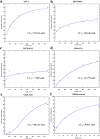Discovering allatostatin type-C receptor specific agonists
- PMID: 38730017
- PMCID: PMC11087482
- DOI: 10.1038/s41467-024-48156-w
Discovering allatostatin type-C receptor specific agonists
Abstract
Currently, there is no pesticide available for the selective control of the pine processionary moth (Thaumetopoea pityocampa-specific), and conventional methods typically rely on mechanical techniques such as pheromone traps or broad-spectrum larvicidal chemicals. As climate change increases the range and dispersion capacity of crop and forest pests, outbreaks of the pine processionary occur with greater frequency and significantly impact forestry and public health. Our study is carried out to provide a T. pityocampa-specific pesticide targeting the Allatostatin Type-C Receptor (AlstR-C). We use a combination of computational biology methods, a cell-based screening assay, and in vivo toxicity and side effect assays to identify, for the first time, a series of AlstR-C ligands suitable for use as T. pityocampa-specific insecticides. We further demonstrate that the novel AlstR-C targeted agonists are specific to lepidopteran larvae, with no harmful effects on coleopteran larvae or adults. Overall, our study represents an important initial advance toward an insect GPCR-targeted next-generation pesticide design. Our approach may apply to other invertebrate GPCRs involved in vital metabolic pathways.
© 2024. The Author(s).
Conflict of interest statement
The authors declare no competing interests.
Figures







References
Publication types
MeSH terms
Substances
Grants and funding
LinkOut - more resources
Full Text Sources
Research Materials

